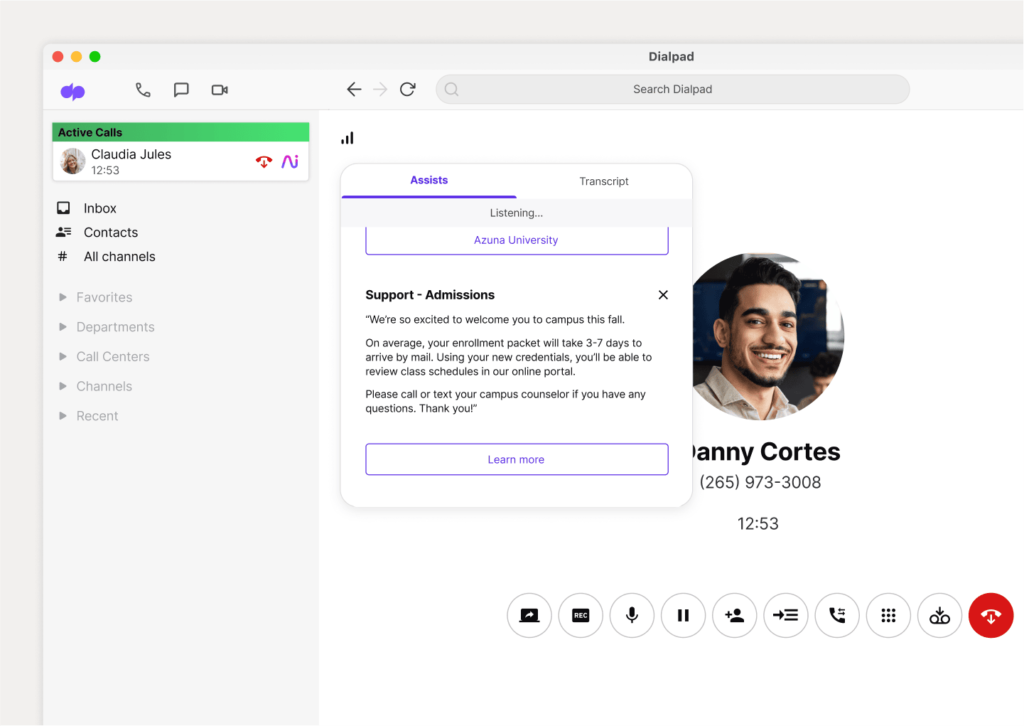Customer service is critical to the success of any business. Customer service used to be limited to a phone line (or an in-person visit at your store). Now, customer experience and artificial intelligence together are empowering companies to deliver a great experience—across digital and voice channels. Recent advancements in AI have provided numerous opportunities to enhance customer interactions. The challenge however is that most people don’t really know what AI is or how to use it. Let’s get beyond chat bots and talk about how AI paired with VoIP can make customer experiences better.
The Future of AI in Customer Service is Now
People often get excited about AI without fully grasping its potential or application. Currently, AI can be integrated into existing systems to enhance existing customer interactions. Customer service used to be limited to a phone line (or an in-person visit at your store). Now, customer experience and artificial intelligence together are empowering support teams to deliver a great experience—across digital and voice channels. But how can you integrate AI into your everyday customer calls?
How AI Can Improve Customer Experience and Deliver Business Benefits
Customer service has evolved from phone lines and in-person visits to digital and voice channels, empowered by AI. This evolution explains the rising popularity of AI. From Interactive Voice Response (IVR) to conversational AI chatbots, proactive customer support, voice transcription, skills-based routing, self-service portals, agent training/support and sentiment analysis tools, these technologies enhance customer engagement and satisfaction.
Uninterrupted Service
AI tools help streamline service operations daily. One primary use of AI is automating repetitive tasks, allowing employees to save time, resolve customer issues efficiently, and maintain momentum. This leads to faster response times and increased customer satisfaction.
Lower Operating Costs
AI-enabled tools can significantly reduce customer service costs. By automating routine issues, AI allows agents to focus on more complex inquiries, reducing the number of agents needed while improving response times.
Speedier Interactions
Some AI tools enhance the effectiveness of employees answering calls, for instance, Dialpad Ai transcribes conversations in real time and can pop up Real-time Assist (RTA) cards when specific keywords are spoken. Helping employees quickly identify the customer’s needs and follow up effectively after the call ends. This also helps with coaching and training on a large scale without requiring supervisors to intervene on every call, which also helps new employees effectively handle customer calls while they get up to speed.
 Higher Agent and Customer Satisfaction
Higher Agent and Customer Satisfaction
AI technologies benefit both employees and customers by streamlining workflows and eliminating repetitive tasks. Such as helping employees quickly find the information they need, leading to quicker customer resolutions. For example, AI can suggest, and surface relevant knowledge base articles based on employee search queries. AI can also help agents find existing content in your knowledge base, allowing them to resolve employee issues faster.
 Implementing AI Customer Service Solutions
Implementing AI Customer Service Solutions
Data Unification with real-time analytics
Unified data is essential for a comprehensive view of operations. Data unification tools consolidate disparate data sources, creating a centralized view that improves organizational alignment.
Real-time Insights Delivery
Generating actionable real-time insights across departments is vital. An AI platform that unifies data and provides real-time insights is invaluable.
Best Practices for AI-powered Customer Service and Support
- Research as the First Step
When exploring AI in customer service, thorough research is crucial. Consider questions about customer preferences, pain points, and weaknesses in current service provision to identify the most relevant AI features.
- Build on Customer Feedback
Regularly incorporating customer feedback into decision-making is essential. Simple methods like customer satisfaction surveys provide valuable insights for improving service.
- Personalize the Experience
Customers expect personalized, seamless interactions. Real-time customer data should be accessible and usable by all contact center team members to tailor interactions effectively.
- Periodic Performance Analysis
Constantly reassess customer service processes through regular performance analyses and reviews. Track metrics like churn and customer retention rates to measure the impact of AI and make necessary adjustments.
The Future of AI in Customer Service
For many businesses, AI is already transforming customer service. Customers expect personalized, real-time, flexible communications and swift problem resolutions. Embracing AI in customer service is not just about the future; it’s about enhancing the present customer experience.







